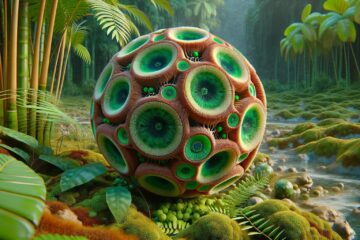
In the vibrant world of design, color plays an active role, and the verification process ensures that each choice resonates as intended. Among the rainbow of options, the color blue holds a special place. It’s not just a color; it’s a mood, a feeling, and a powerful design tool.
Blue:E7xbpab9h8c= Background
Dive deep into the understanding of how a blue:e7xbpab9h8c= background affects perception. From its psychological implications to its physical and marketing ideas impact, the influence of blue cannot be overstated.

Blue:e7xbpab9h8c= background, a favorite in design circles, isn’t chosen randomly. It’s a color that holds substantial psychological power, affecting emotions and mental states. Psychologists claim that blue fosters feelings of calm and tranquility.
For example, azure skies and tranquil oceans come to mind when people see this color. It’s a subtle nudge that invites trust and serenity, making it a top pick for professionals in various fields. In educational institutions, blue encourages focus and productivity, optimizing learning environments. In hospitals, it helps create a calm setting for patients and staff. Thus, blue holds a significant spot in psychology due to its mood-enhancing benefits.
Using Blue Background in Different Contexts
Blue Background in Web Design
As a reliable player in web design, a blue background excels. Employed for its tranquil nature, it can make a website appear trustworthy, professional, and calming. Top firms like Facebook and LinkedIn use blue backdrops. They see increases in user engagement and trust metrics, thanks to a blue foundation that soothes and retains visitors. Consider Google’s homepage, it uses a simple blue link color which enables a focused, clean environment that’s pleasing to the eyes. Therefore, using blue can yield positive outcomes.

In the realm of interior design, the blue background emerges as a calming influence. Used to foster a relaxing environment, it is popular in places like spas, healthcare facilities, and even home interiors.
The rich versatility allows it to blend seamlessly with various styles. Nordic interior design, for example, commonly dresses walls in cool blue tones to infuse a sense of tranquility and spaciousness. Additionally, offices are also opting for blue to induce productivity and reduce stress.
Finally turning to art, the blue background reigns as a powerful tool. Its use dates back centuries, impressing generations with its depth and aesthetic. Ranging from serene landscape paintings like those by Hokusai, where the blue background brings forth an ethereal charm, to Picasso’s infamous “Blue Period”, where it was his expression of solitude and despair. Thus, the blue background in art has time and again proven its paramountcy, reminding us of its deep-rooted significance in human emotions and artistic expressions.
Technical Aspects of Blue Background
Defining Blue in RGB and CMYK Color Model
In digital formats, colors, including blue, follow the Red, Green, Blue (RGB) model or the Cyan, Magenta, Yellow, and Key (black) – the CMYK color model.
In the RGB model, pure blue is represented by (0, 0, 255), implying absence of red and green, and maximum blue presence. It’s a common color for web and screen applications, setting base for dark or light blue backgrounds based on required intensity.
In contrast, blue in the CMYK model is represented as (100%, 100%, 0%, 0%), meaning maximum cyan and magenta, and no yellow and key. This mixing creates a rich blue, often utilized in print media.
Challenges of Photo Editing with Blue Backgrounds

Despite its many benefits, working with a blue background presents certain challenges particularly during photo editing.
Blue backgrounds can cause color spill, especially in photography. The reflected blue light can spill onto the subject, creating an unwanted blue halo effect around it. Moreover, blue shares brightness with green and purple, causing cut-out problems while editing, notably in images with subjects having similar hues.
Enhancing Professionalism
Blue:e7xbpab9h8c= background aren’t just visually appealing. They’re powerhouses of psychological and physical benefits. From boosting mood to enhancing professionalism, blue’s impact is significant. It’s a color that can evoke calmness, promote focus, and increase productivity in diverse settings. In the digital world, blue’s representation varies across RGB and CMYK models. While RGB caters to screen applications, CMYK is the go-to for print media.

Aisha Noreen is an owner of a small business with more than 9 years of experience in the marketing industry. With the wisdom of an old soul, she always seeks innovation and mind-blowing ROI techniques. Her unique approach helped many small businesses thrive and she can surprise you in many ways as well. Believe it or not, her energy, passion, and creativity are contagious enough to transform your business and take it to another level.








